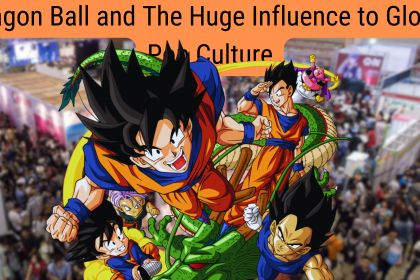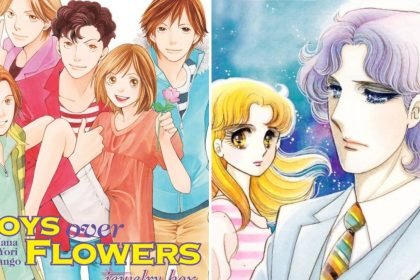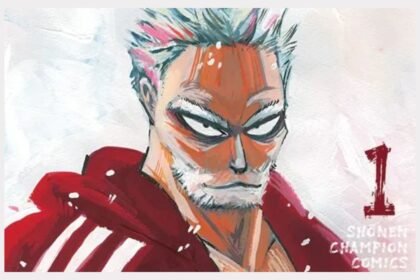Sailor Moon, the iconic anime and manga series created by Naoko Takeuchi, has left an indelible mark on popular culture since its debut in 1992. With its powerful themes of love, friendship, and female empowerment, Sailor Moon has garnered a dedicated and passionate fanbase that spans generations. In this article, we will delve into the reasons why Sailor Moon remains beloved by so many even after 30 years and explore the various aspects that contribute to its enduring appeal.
The Power of Representation: Sailor Moon as a Feminist Icon
Breaking Stereotypes and Empowering Girls
Sailor Moon has often been hailed as a feminist icon for its groundbreaking portrayal of strong, independent female characters. The series challenges traditional gender roles by presenting a diverse group of young women who embrace their individual strengths and fight against evil forces as the Sailor Guardians. Each character represents a different facet of womanhood, showcasing a range of personalities and backgrounds that resonate with audiences.
Sailor Moon herself, also known as Usagi Tsukino, embodies the journey of self-discovery and personal growth. Initially depicted as a clumsy and naive schoolgirl, Usagi evolves throughout the series, gaining confidence, leadership skills, and a deep sense of responsibility. Her transformation serves as an empowering message to young girls that they can overcome their insecurities and become the heroes of their own stories.
LGBTQ+ Representation and Acceptance
One of the groundbreaking aspects of Sailor Moon is its inclusion of LGBTQ+ characters and themes, which was revolutionary for its time. The series features a romantic relationship between Sailor Uranus (Haruka Tenoh) and Sailor Neptune (Michiru Kaioh), two of the Sailor Guardians. Their love for each other is portrayed with tenderness and authenticity, challenging societal norms and promoting acceptance.
Sailor Moon’s positive portrayal of LGBTQ+ relationships has had a profound impact on fans, especially those who identify as queer. It has provided them with much-needed representation and a sense of validation, showing that love knows no boundaries. By embracing diverse forms of love and relationships, Sailor Moon has fostered a more inclusive and accepting fandom.
Further Readings: Onimai: I’m Now Your Sister! and Gender Identity Disorder in Anime
The Magical World of Sailor Moon: Captivating Storytelling and Endearing Characters
Epic Battles and Cosmic Adventures
At its core, Sailor Moon is an epic tale of cosmic battles between the forces of good and evil. The series combines elements of fantasy, science fiction, and romance to create a captivating narrative. That keeps viewers and readers hooked. From the iconic transformation sequences to the exhilarating battles against powerful villains, Sailor Moon delivers a sense of wonder and excitement.
The overarching storyline follows Sailor Moon and her fellow Guardians as they protect the Earth from various threats, all while navigating the complexities of their personal lives. The blend of high-stakes action and relatable character dynamics creates a compelling narrative that appeals to both young and adult audiences.
Endearing Characters and Strong Bonds
One of the key factors behind Sailor Moon’s enduring popularity lies in its memorable cast of characters. Each Guardian possesses a unique personality, allowing viewers to find a character they can relate to or admire. Whether it’s the intelligent and studious Sailor Mercury (Ami Mizuno), the passionate and fiery Sailor Mars (Rei Hino), or the kind-hearted and loyal Sailor Jupiter (Makoto Kino). Each those character contributes to the richness and depth of the series.
Furthermore, the bonds of friendship that form among the Sailor Guardians are a central theme throughout the series. Sailor Moon emphasizes the importance of supportive relationships, illustrating the power of friendship in overcoming challenges. This message resonates with audiences, reminding them of the value of genuine connections and the strength that can be found in unity.
Sailor Moon’s Impact on Popular Culture: Beyond Anime and Manga
Fashion and Popularity
Sailor Moon’s influence extends far beyond the realm of anime and manga. The series has had a significant impact on fashion trends, particularly in Japan. The iconic sailor-style school uniforms worn by the characters have become a recognizable symbol of Japanese pop culture. Elements of Sailor Moon’s fashion, such as oversized bows and pleated skirts, have found their way into mainstream fashion, inspiring countless designers and fashion enthusiasts.
Moreover, Sailor Moon’s popularity has transcended borders, captivating audiences worldwide. The series has been localized and translated into multiple languages, gaining a global following. Sailor Moon conventions, cosplay events, and merchandise continue to thrive, further solidifying its place in popular culture.
Empowering Future Generations
One of Sailor Moon’s greatest legacies is its ability to inspire and empower future generations. Fans credit the series with instilling in them a sense of confidence, resilience, and the belief that they can make a difference. Sailor Moon’s themes of love, friendship, and self-acceptance serve as guiding principles for countless individuals. They have found solace and strength in the series.
By presenting complex and relatable characters, Sailor Moon encourages young peopleto embrace their true selves. Make them to follow their passions, and stand up for what they believe in. The series teaches valuable lessons about empathy, compassion, and the importance of fighting for justice. It’s making a powerful tool for personal growth and empowerment.
Frequently Asked Questions (FAQs)
- Why is Sailor Moon considered a feminist series?
Sailor Moon is considered a feminist series because it challenges traditional gender roles, promotes female empowerment, and showcases diverse representations of women. The series emphasizes the strength and agency of its female characters, encouraging girls to embrace their own power and potential. - What impact did Sailor Moon have on LGBTQ+ representation?
Sailor Moon was one of the first mainstream anime series to include LGBTQ+ characters and themes. The romantic relationship between Sailor Uranus and Sailor Neptune broke boundaries and provided important representation for the LGBTQ+ community, helping to normalize same-sex relationships in media. - How did Sailor Moon influence fashion trends?
Sailor Moon’s iconic sailor-style school uniforms and distinct fashion choices have had a significant impact on fashion trends in Japan and beyond. The series popularized elements such as oversized bows, pleated skirts, and sailor collars. Which have been incorporated into mainstream fashion and continue to inspire designers. - Why is Sailor Moon still relevant after 30 years?
Sailor Moon’s enduring relevance can be attributed to its timeless themes of love, friendship, and self-discovery. The series resonates with audiences of all ages by addressing universal struggles and aspirations, while also promoting messages of inclusivity and empowerment. - How has Sailor Moon impacted popular culture outside of anime and manga?
Sailor Moon’s influence extends beyond its original medium, permeating popular culture in various ways. The series has inspired merchandise, conventions, cosplay, and fan communities worldwide, solidifying its status as a cultural phenomenon.
Conclusion
Sailor Moon’s enduring appeal lies in its ability to capture the hearts of audiences across generations. Through its empowering portrayal of female characters, captivating storytelling. Impact on popular culture, Sailor Moon has become a beloved and influential series. Its messages of love, friendship, and self-acceptance continue to resonate with fans. Inspiring them to embrace their own strengths and fight for a better world. As we celebrate 30 years of Sailor Moon, it’s clear that its legacy will endure. Leaving an everlasting impact on the lives of those who have been touched by its magic.













